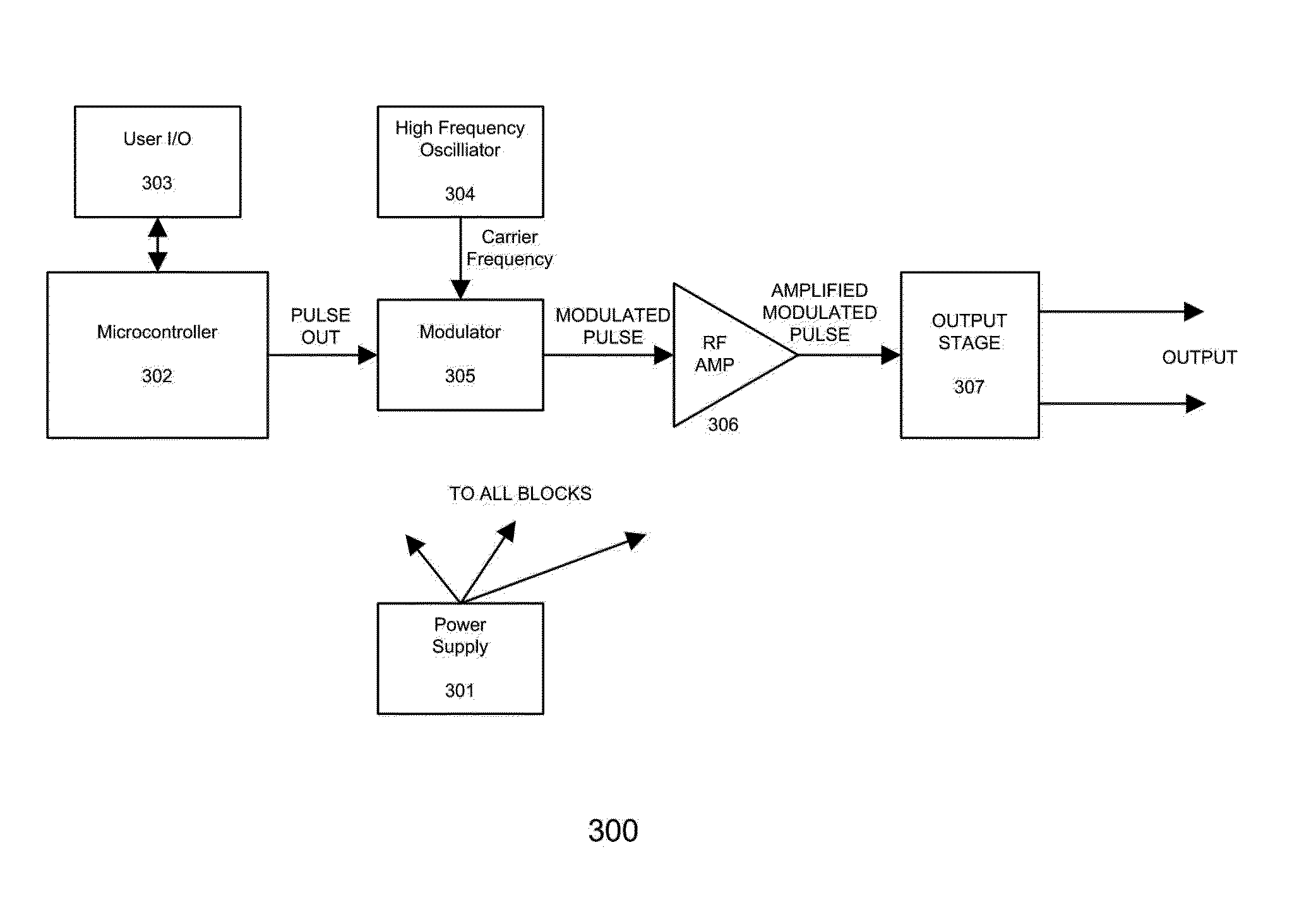Devices and method for treatment of degenerative joint diseases with electromagnetic fields
a technology of degenerative joint disease and electromagnetic field, which is applied in the field of devices and methods for treating degenerative joint disease with electromagnetic field, can solve the problems of affecting the treatment effect, and affecting the function of the joint, so as to reduce the pro-inflammatory cytokines and other pro-inflammatory pathways, slow or reverse the destruction of the joint tissue, and improve the effect of growth factor production
- Summary
- Abstract
- Description
- Claims
- Application Information
AI Technical Summary
Benefits of technology
Problems solved by technology
Method used
Image
Examples
example 1
[0087]The teachings for EMF signal configuration in the present invention have been tested experimentally on CaM-dependent myosin phosphorylation in a standard enzyme assay. The cell-free reaction mixture was chosen for phosphorylation rate to be linear in time for several minutes, and for sub-saturation free Ca2+ concentration. This opens the biological window for Ca / CaM to be EMF-sensitive. This system is not responsive to PEMF if Ca is at saturation levels with respect to CaM, and reaction is not slowed to a minute time range, Experiments were performed using myosin light chain (“MIX”) and myosin light chain kinase (“MLCK”) isolated from turkey gizzard. A reaction mixture consisted of a basic solution containing 40 mM Hepes buffer, pH 7.0; 0.5 mM magnesium acetate; 1 mg / ml bovine serum albumin, 0.1% (w / ) Tween80; and 1 mM EGTA12. Free Ca2+ was varied in the 1-7 μM range. Once Ca2+ buffering was established, freshly prepared 70 nM CaM, 160 nM MLC and 2 nM MLCK were added to the ba...
example 2
[0091]According to one variation, the teachings of the present invention in respect to CaM-dependent signaling allowed a priori configuration of PEMF signals to modulate cutaneous wound repair, A rat wound model has been well characterized both bio mechanically and biochemically, and was used in this study to examine the effect of modeled waveforms. Healthy, young adult male Sprague Dawley rats weighing approximately 300 grams were utilized.
[0092]The animals were anesthetized with an intraperitoneal dose of Ketamine 75 mg / kg and Medeto idine 0.5 mg / kg. After adequate anesthesia had been achieved, the dorsum was shaved, prepped with a dilute betadine / alcohol solution, and draped using sterile technique. Using a #10 scalpel, an 8-cm linear incision was performed through the skin down to the fascia on the dorsum of each rat. The wound edges were bluntly dissected to break any remaining dermal fibers, leaving an open wound approximately 4 cm in diameter. Hemostasis was obtained with app...
example 3
[0096]This example illustrates the effects of a PEMF signal configured to modulate CaM-dependent NO signaling in a culture of articular cartilage cells. A PEMF signal having a 5 msec burst of asymmetrical rectangular waves, applied for 30 minutes increased DNA synthesis in articular chondrocytes by 150% over 72 hours. That PEMF acted as a first messenger to modulate CaM-dependent. NO / cGMP signaling was confirmed by systematically using a CaM antagonist (W-7) to inhibit CaM activation of cNOS, Further support was obtained when L-nitrosoarginine methy ester (L-NAME), a cNOS inhibitor, and LY83583 a sGC inhibitor, to prevent the formation of cGMP, inhibited the increase in DNA. When either the CaM antagonist, or the NO, or the sGC inhibitor, was present during PEMF exposure, each one individually eliminated the PEMF effect on DNA synthesis at 72 hours, These results provide direct support that PEW acted as a first messenger to modulate CaM-dependent NO / cGMP signaling when the signal wa...
PUM
 Login to View More
Login to View More Abstract
Description
Claims
Application Information
 Login to View More
Login to View More - R&D
- Intellectual Property
- Life Sciences
- Materials
- Tech Scout
- Unparalleled Data Quality
- Higher Quality Content
- 60% Fewer Hallucinations
Browse by: Latest US Patents, China's latest patents, Technical Efficacy Thesaurus, Application Domain, Technology Topic, Popular Technical Reports.
© 2025 PatSnap. All rights reserved.Legal|Privacy policy|Modern Slavery Act Transparency Statement|Sitemap|About US| Contact US: help@patsnap.com



